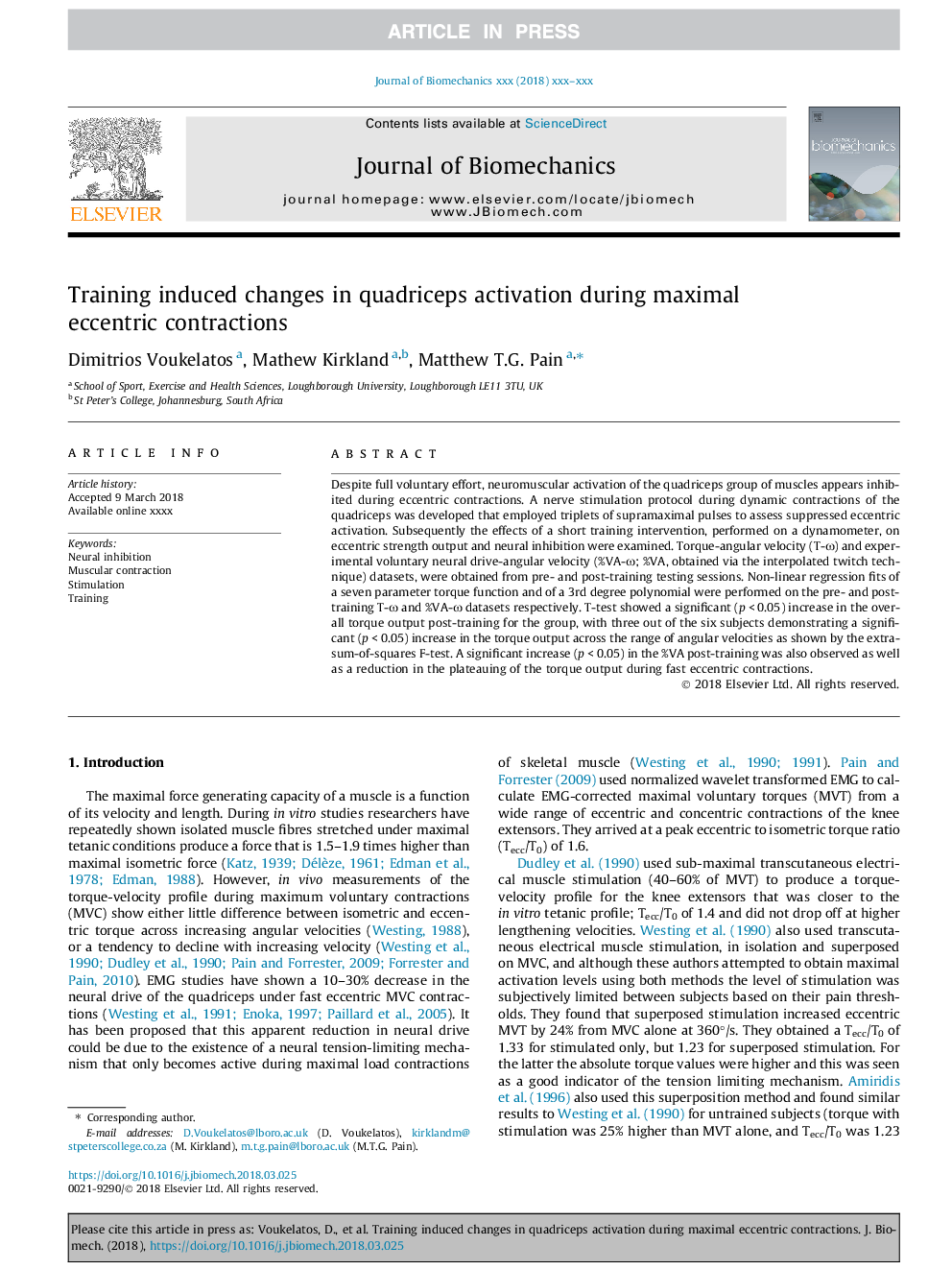| Article ID | Journal | Published Year | Pages | File Type |
|---|---|---|---|---|
| 7236109 | Journal of Biomechanics | 2018 | 7 Pages |
Abstract
Despite full voluntary effort, neuromuscular activation of the quadriceps group of muscles appears inhibited during eccentric contractions. A nerve stimulation protocol during dynamic contractions of the quadriceps was developed that employed triplets of supramaximal pulses to assess suppressed eccentric activation. Subsequently the effects of a short training intervention, performed on a dynamometer, on eccentric strength output and neural inhibition were examined. Torque-angular velocity (T-Ï) and experimental voluntary neural drive-angular velocity (%VA-Ï; %VA, obtained via the interpolated twitch technique) datasets, were obtained from pre- and post-training testing sessions. Non-linear regression fits of a seven parameter torque function and of a 3rd degree polynomial were performed on the pre- and post-training T-Ï and %VA-Ï datasets respectively. T-test showed a significant (pâ¯<â¯0.05) increase in the overall torque output post-training for the group, with three out of the six subjects demonstrating a significant (pâ¯<â¯0.05) increase in the torque output across the range of angular velocities as shown by the extra-sum-of-squares F-test. A significant increase (pâ¯<â¯0.05) in the %VA post-training was also observed as well as a reduction in the plateauing of the torque output during fast eccentric contractions.
Related Topics
Physical Sciences and Engineering
Engineering
Biomedical Engineering
Authors
Dimitrios Voukelatos, Mathew Kirkland, Matthew T.G. Pain,
